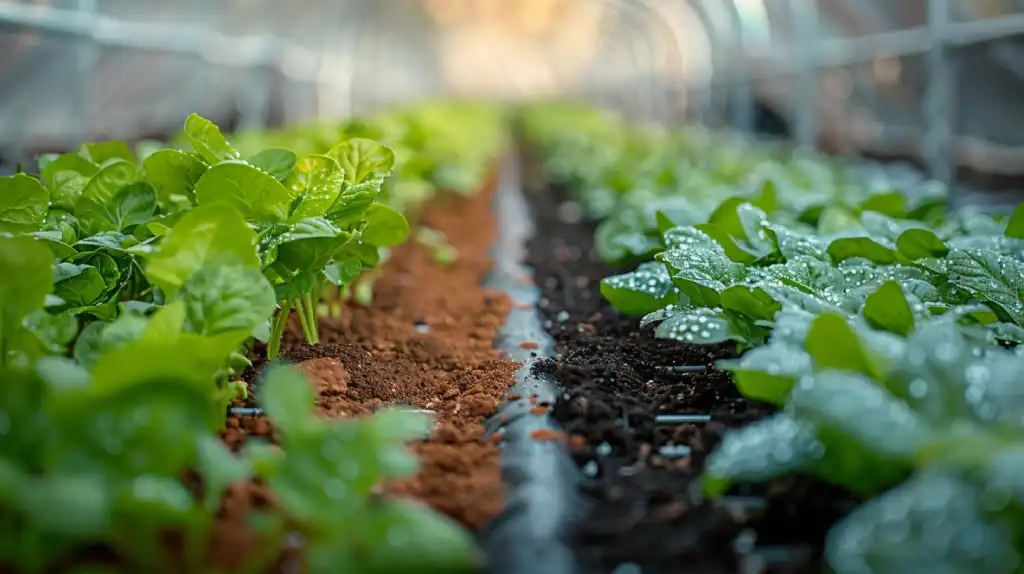Methods for Sustainable agriculture focus on soil health, biodiversity, water conservation, and reduced chemical inputs.
Sustainable agriculture is a farming method that focuses on producing food while maintaining the health of the environment, society, and economy.
It integrates ecological principles, conserves resources, and promotes fair livelihoods. As the global population grows and environmental concerns rise, adopting sustainable agriculture methods is important for securing food security, ecological balance and achieving the main goal of sustainable agriculture.
This article outlines ten effective methods of sustainable agriculture that can help farmers achieve high productivity while preserving the natural ecosystem.
From crop rotation to renewable energy use, these practices are designed to enhance soil health, conserve water, reduce chemical inputs, and promote precious biodiversity.
Methods for Sustainable Agriculture
1. Crop Rotation
Crop rotation involves growing different types of crops in the same area across different seasons. This method helps break pest cycles, improve soil structure, and increase nutrient availability. Farmers can improve soil fertility and reduce the risk of crop diseases by rotating crops.
2. Cover Cropping

Cover cropping involves planting specific crops, such as legumes or grasses, during off-seasons when main crops are not grown. These cover crops protect the soil from erosion, improve soil organic matter, and fix nitrogen in the soil, which improves fertility for future crops.
3. Agroforestry
Agroforestry combines trees and shrubs into agricultural landscapes. This method promotes biodiversity, reduces soil erosion, and provides shade and shelter for crops and livestock. Trees can also offer extra products like fruit, timber, and fodder, diversifying farm income.
Agroforestry commonly includes cash crops such as coffee, cocoa, or fruit trees to provide economic benefits together with ecological benefits.
4. Conservation Tillage
Conservation tillage reduces soil disturbance by using methods such as no-till or reduced-till farming. This practice helps maintain soil structure, improve water infiltration, and reduce erosion. It also promotes the growth of beneficial soil organisms.
5. Integrated Pest Management (IPM)
IPM is a strategy that combines biological, cultural, mechanical, and chemical methods to manage pests sustainably. By using natural predators, crop rotations, and targeted pesticide use, IPM reduces the reliance on harmful chemicals and protects beneficial species.
6. Organic Farming

Organic farming avoids synthetic chemicals and focuses on natural inputs like compost, manure, and biological pest control. This method improves soil fertility, protects water quality, and produces healthier food. Organic farming also supports precious biodiversity and ecological balance.
7. Permaculture
Permaculture is a design philosophy that copies natural ecosystems. It involves creating self-sustaining agricultural systems that require minimal external inputs. By combining plants, animals, water management, and human needs, permaculture promotes sustainable and resilient farming.
8. Water Management

Effective water management methods, such as drip irrigation, rainwater harvesting, and soil moisture monitoring, ensure efficient water use in agriculture. These practices help conserve water resources, reduce waste, and increase crop resilience to drought.
9. Livestock Integration
Integrating livestock with crop production creates a cooperative relationship where animals provide manure for crops, and crops offer feed for livestock. This method improves nutrient cycling, enhances soil fertility, and diversifies farm income.
10. Renewable Energy Use
Renewable energy powers sustainable agriculture by conserving natural resources, reducing environmental impact, and promoting long-term land health.
Implementing renewable energy sources, such as solar panels, wind turbines, and biogas systems, on farms reduces dependency on fossil fuels. This transition lowers greenhouse gas emissions, decreases energy costs, and promotes environmental sustainability.
The Bottom Line
Methods for sustainable agriculture are important for a secure food supply and healthy environment.
By nurturing the land, conserving resources, and reducing environmental impact, these practices create a resilient food system that supports both human well-being and ecological balance.
Following the methods for sustainable agriculture are crucial for environmental health. It safeguards soil, water, and air quality, preserves biodiversity, and helps fight climate change.
FAQ's
1. Which farming method is the most sustainable?
Organic farming, agroforestry and aquaponics are often considered highly sustainable methods of farming.




